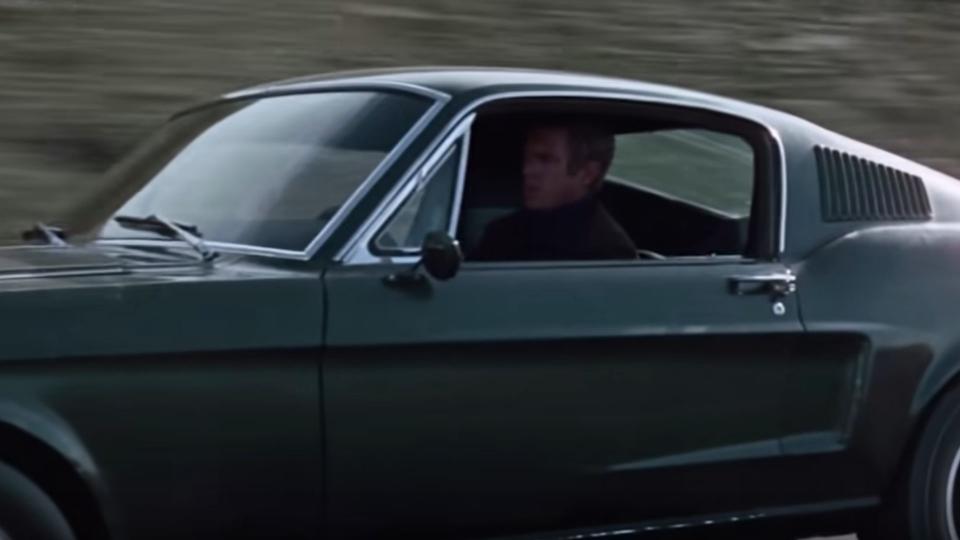How Movie Car Chases Have Changed Over The Years
⚡️ Read the full article on Motorious
One of the most exciting things on the silver screen has evolved big time…
Even if you’re not a complete gearhead, you know car chases are some of the best, most iconic things in many movies. Right off the top of your head you can probably list several which have left a big impression on your mind. There’s something viscerally enthralling about one person chasing another in a car or on a motorcycle which stirs an excitement nobody normal can deny.
Learn what's happened to different famous movie and TV cars here.
However, how car chase scenes have been filmed over the years has certainly changed as cars themselves have evolved from horseless carriages pushing just a few horsepower to high-tech, high-powered machines able to push well above 100 mph in a short time.
As pointed out in the accompanying video, car chase scenes were difficult to pull off in the early part of the 20th Century. However, the concept of Buster Keaton piloting a car across some railroad tracks just before a train comes along in the film Sherlock Jr. surprisingly echoes the nail-biting final sequence in the first The Fast and the Furious movie. That clearly shows what fundamentally kept audiences glued to their seats back in 1924 was what still kept people engaged in 2001 and today.

Technology and methods for shooting car chases certainly has evolved quite a bit, making the film sequences more realistic in many ways. What most people consider to be one of the greatest chase scenes appears in Bullitt, where Steve McQueen sends it in his Mustang on the hilly streets of San Francisco.
What you might not realize about that movie was that it departed from the previous practice of shooting chase scenes using a studio set, sometimes using a green screen to make it look like everything was filmed at the location. Director Peter Yates was able to leverage newer, more compact cameras to conduct the pursuit between Mustang and Dodge Charger in San Francisco, making it feel more realistic and thus more exciting because the sense of risk to the drivers and everyone else was elevated. Plus, those smaller cameras meant interior shots in both vehicles, immersing viewers even further.
Of course, it helped that Steve McQueen wasn’t just a compelling actor, the man had real-life racing experience. His proficiency with the Ford Mustang paid off in spades. For example, that reverse burnout everyone loves wasn’t actually scripted. McQueen actually missed a turn and quickly threw the pony car into reverse to get back on track as the film kept rolling. It added such a flair to the chase scene it was retained.
While Bullitt was an early adopter of shooting chase scenes out in the real world with actors performing at least some of the driving stunts, it’s been far from the last production to do so.

Another early car chase scene using city streets was The French Connection. Using cameras mounted to Gene Hackman’s 1971 Pontiac LeMans, the scene felt ultra-realistic for audiences. Even more astounding was the later revelation that director William Friedkin didn’t get permission for the chase sequence to be shot in New York City and thus the streets weren’t cleared. In other words, those were real pedestrians and innocent drivers just minding their own business. Even the one car crash was unplanned, the other driver not a member of the production crew.
To get stunt driver Bill Hickman to drive it like he stole it, Friedkin was insulting the man’s professional capabilities as well as his manhood for weeks before shooting the chase sequence. Somehow, nobody was injured as Hickman drove at speeds up to 90 mph for 26 city blocks. The footage collected riveted audiences to their chairs.
The parts of the chase scenes where the actors were driving used a different trick. By filming at a lowered frame rate, what they call “undercranking” in the film industry, making everything appear to be moving faster. That meant the actors could drive at much slower speeds, risking far less as they broke the rules of the road in the Big Apple. The same technique was employed in Vanishing Point and many other films after.

A completely different technique was employed for the chase scenes in Ronin. Considered by many to have some of the most technically amazing maneuvers through city streets captured on film, the driving was actually done by Formula One professionals. Filmmakers used right-hand-drive cars, outfitting them with fake left-hand steering wheels the actors sat at while the stunt drivers actually careened through the tight streets of Paris with extreme precision.
Perhaps the most amazing car chase scene innovation is known as The Biscuit, named after the movie Seabiscuit, which doesn’t have any car chases in it. Basically, it’s a flatbed vehicle or something similar filmmakers use to load the hero car and drive around, making the vehicle look like it’s maneuvering through streets when it’s actually being hauled. All kinds of configurations have been used for this in plenty of modern films, including Ford v Ferrari.
Of course, CGI is a huge part of many car chase scenes in the 21st Century. The biggest pioneer in that area has been the Fast and Furious franchise. Not everyone is a fan of these effects since they can often look cartoony, but they allow for sequences which otherwise wouldn’t be possible.
Sign up for the Motorious Newsletter. For the latest news, follow us on Facebook, Twitter, and Instagram.

 Yahoo Finance
Yahoo Finance 